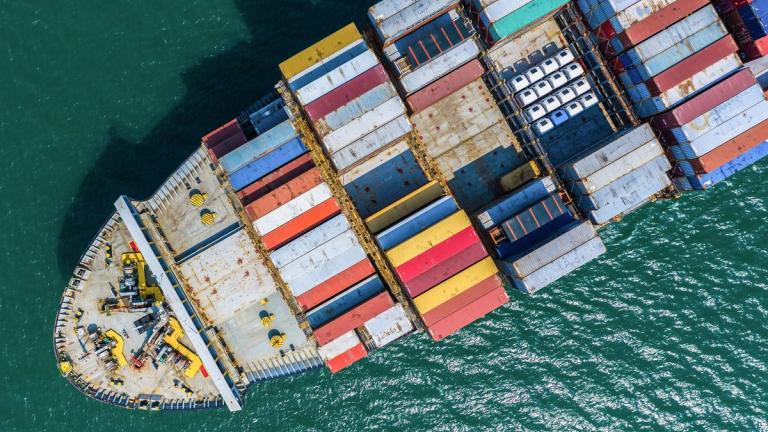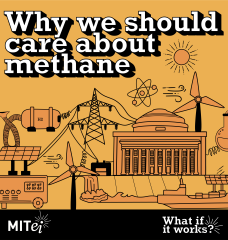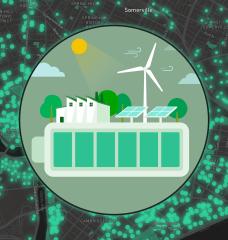
Among the climate-trade issues that have emerged to date, one of the most contentious concerns the possible use of offsetting border measures is to reduce free rider, carbon leakage, and international competitiveness problems. The underlying problem in the terminology of political economy is that there can be ‘free riders’ on international agreements, in this case, multilateral climate change agreements. The problem, in short, is that any given country can benefit from such an agreement without incurring the costs of participating in it. Hence, it is required to offset the border measures that address free riders, carbon leakage, and international competitive concerns.
Moreover, the regime can be undermined by the ‘leakage’ of emissions, as production increases in countries that are not a party to the climate regime. Furthermore, firms may fear that their international competitive position is being undermined by lower energy prices in non-participating countries. In the US, these issues have become salient in regard to emerging economy countries (especially Brazil, China, and India).
While the United Nations Framework Convention on Climate Change (UNFCCC) and the Kyoto Protocol refer to the potential conflict with international trade, the main constraints on domestic regulatory policies to address climate change come from two WTO agreements: The General Agreement on Tariffs and Trade (GATT) and the Technical Barriers to Trade Agreement (TBT Agreement). In particular, there are two broad types of constraints that arise under these agreements.
First, domestic regulatory measures implementing climate change policy may conflict with the national treatment provisions of GATT or the TBT Agreement. National treatment requires that imported products ‘be accorded treatment no less favorable than’ that of ‘like’ domestic products. The objective of national treatment provisions is to ‘prevent Members from applying internal taxes and regulations in a manner which affects the competitive relationship, in the marketplace, between the domestic and imported products involved, “so as to afford protection to domestic production. However, these requirements also constrain the states’ ability to implement non-protectionist regulatory measures.
Second, domestic measures may be constrained by a range of more procedural requirements under GATT jurisprudence or the TBT Agreement such as notice and comment requirements. Such constraints may promote deliberative democracy in individual states. However, some of these constraints may be less beneficial. For example, requirements specifying the level of scientific evidence necessary for a country to justify a measure can reduce the ability of the states to choose their level of protection from risk in the face of scientific uncertainty. This impact of scientific uncertainty is particularly problematic in the context of climate change given the range of uncertainty about the scope and timing of its effects and the effectiveness of various measures to address them.
Required Changes to Trade Rules to Facilitate Climate Change Action
Under the WTO assumptions and rules, four areas are being considered: subsidization of green goods and technologies; border tax adjustments (BTAs) related to carbon content; restrictions on the export of fossil fuels, especially natural gas; and intellectual property protection of new technologies and products related to climate change. In each case, this paper suggests adopting a better balance between the need to restrain mercantilist tendencies and to allow scope for environmentally friendly policies. This paper also concludes by showing how these changes could promote international cooperation on climate change.
Green Subsidies: Resolves and Recommendations
Partner countries can take two types of actions: Where they are affected in third markets, they can contest the subsidies through the WTO dispute settlement mechanism, asking for them to be curtailed or removed; and where they are affected in their own markets they can, in addition, impose countervailing duties on products benefitting from such subsidies, subject to a number of conditions, including demonstration of injury to a domestic industry.
On the face of it, these rules are an example of how trade negotiations can produce disciplines that are good for global welfare. In principle, any benefits of subsidies—such as enhancing the competitiveness of domestic producers—are outweighed by their costs to the granting government. Nevertheless, politically influential producer groups (i.e., agriculture and aircraft makers) can sometimes extract subsidies from a government, which can, in turn, provoke retaliatory subsidies from other governments and lead to a wasteful subsidy war. WTO rules which prohibit export subsidies and render production subsidies actionable are meant to prevent precisely such a non-cooperative outcome.
In relation to climate change, however, these rules curtail three important benefits of subsidies (we take the case of the United States for this instance):
- First of all, any subsidy that promotes clean energy and green products at home confers a benefit also to partner countries. If China generates less CO2, that is partly a benefit for the United States. So, the calculus of costs and benefits gets altered because of the global spillovers from such subsidies.
- Second, a country also makes available cheaper green products and technologies to other countries, and that encourages their use. If these products generate positive environmental spillovers, then they are likely to be underused at normal market prices, and subsidies can take us closer to the social optimum. For example, retailers and solar installation companies in the United States, which benefited from cheap Chinese solar panels, argued vehemently, but in vain, against curtailing competition from China. Furthermore, European action may cause the solar energy market to shrink. Any increase in domestic production and employment due to higher prices of Chinese products would be outweighed by decreases suffered by upstream and downstream firms.
- Third, there is an arguably bigger political economy benefit. For example, prospects for climate change action in the United States in the form of a carbon tax or cap-and-trade do not seem bright. Former President Obama’s acknowledgment of climate change as a priority in his State of the Union Speech is unlikely to be matched by bold action because of the lack of bipartisan support in Congress. This state of affairs reflects a combination of factors—climate change denial, the strength of the carbon energy industries, and weak economic prospects. Thus, the United States is unable or unwilling either to raise the price of carbon or to subsidize cleaner fuels and technologies. One development may galvanize action in the United States: the threat that green technology leadership will be captured by China. In other words, the United States needs a Sputnik moment of collective alarm at the loss of US economic and technological ascendancy.
China and other countries are today being straitjacketed by the subsidies-are-bad ideology. The global battle against climate change is thus being fought with a depleted arsenal. Countries that have the financial means to do so should be allowed to deploy industrial policy to promote clean energy and green technologies. What the world needs is unbridled competition or even a race initiated by a change in global trade rules to facilitate large scale support for the development and production of the currently under-supplied green goods. The United States would be forced to respond. Fiscal weakness might prevent the grant of retaliatory subsidies by the United States. But that might force the United States into the best possible reaction: increasing the price of carbon as a way of re-gaining the technological edge on climate change.
This logic applies also to export subsidies. They may also confer environmental benefits, but they are likely to inflict greater damage on partner countries in terms of trade displacement and are blatantly mercantilist instruments. It may be harder to agree on greater permissiveness vis-à-vis such instruments and their use may generate a stronger political backlash in importing countries.
In light of the above, we can alter the current rules in the following manner.
Production subsidies for specific green products and technologies should be permissible. Partner countries should not be able to take action unilaterally or through WTO dispute settlement against them. Export subsidies related to green products and technologies should not be prohibited. However, since they carry greater risks of mercantilist abuse, they should be regulated more strictly than production subsidies. That is, depending on certain thresholds—in terms of the magnitude of subsidies and the damage to partner country trade—which could be specified in the future, they should be actionable either through multilateral dispute settlement or through countervailing action. In the language of current WTO subsidy rules, we would be shifting the treatment of subsidies one notch in the degree of greater permissiveness: specific green subsidies that are currently actionable would be permitted, and current export subsidies that are prohibited would be made actionable.
However, the existing rules for subsidies contingent upon the use of domestic over imported goods should not be changed. Local-content promoting subsidies have been implemented in China, India, and Canada and several countries, and contested by the United States and others (in fact China stopped providing such subsidies to its solar power companies in response to trade action by the United States). These subsidies do not have the environmental benefits of other subsidies because they merely induce the substitution of more costly domestic inputs for cheaper foreign alternatives, and therefore do not further—they may even hinder attaining—environmental objectives.
It may be observed how WTO laws related to the trade interventions to address global spillovers such as those from granting production and export subsidies for green goods which have a beggar-thy-neighbor aspect but which help address the problem of climate change. For example, in the famous shrimp-turtle case, the WTO Appellate Body declared legitimate a US import ban on shrimp caught using a production process that was harmful to an endangered species of turtles.
By allowing a ban based on the process of production and not the product itself, the WTO acknowledged that members were permitted, under some conditions, to take trade measures to protect the global public good even when the damaging action was taking place outside the territory of the member. If negative interventions such as bans can be justified in this manner, surely it would make sense also to legitimize or be more permissive toward positive actions such as production and export subsidies when they serve to protect the global environment by encouraging more climate-friendly production and consumption outside a member’s territory.
Border Tax Adjustments
With notable exceptions, countries around the world have shown great reluctance to raise directly the domestic price of carbon. Countries that are inclined to raise carbon prices may favor additional border taxes, for two reasons: to offset the competitiveness disadvantage to their firms, and to prevent the “leakage” of carbon emissions in the form of increased production in countries with lower carbon prices. Other countries are wary of border taxes because of the “slippery slope” problem, i.e., once allowed, they could serve protectionist goals.
However, there is a range of actions and approaches that have been proposed, which vary in terms of their trade and environmental friendliness and also in the manner and extent to which they address underlying political economy problems. At one end, there is the recent Australian carbon tax that was implemented unilaterally whose key feature is that the tax is not applied to imports. Instead, the government removes some of the carbon tax burdens on domestic firms in the energy-intensive and trade-exposed sectors over time. This tax can thus be seen as very trade-friendly because it is not imposed on imported goods. By the same token, it exposes the domestic industry to greater competition from imports from countries that do not impose similar carbon taxes as Australia.
At the other end of the spectrum are border tax adjustments imposed on imports based on the carbon embodied in them. In the climate change bill introduced in the US Senate by Senators Boxer and Sanders in February 2013, there was a provision for a “carbon equivalency fee” on imports of carbon pollution-intensive goods. In the European Union, no clear policy initiatives have so far been taken in relation to border tax adjustments except in relation to carbon taxes on domestic and foreign airlines. But in the past, then French President Nicolas Sarkozy, among others, called for countries in the European Union to adopt carbon taxes and to impose adjustments at the border for these taxes.
So, can border taxes be designed in a way that addresses these conflicting concerns?
From a trade perspective, border tax adjustments applied symmetrically to imports and exports essentially transform production-based taxes into consumption-based taxes. Such adjustments do not alter the incentives within a country to produce exports or importable. From an environmental perspective, border tax adjustments are aimed at ensuring that the emissions reductions achieved within a country through a tax are not totally offset by the increase in emissions that occurs in partner countries by virtue of expanded trade.
Thus, the border tax adjustments (BTAs) based on carbon content in imports would have drastic trade consequences. There is also a serious practical problem with BTAs based on inputs that are consumed in the process of producing the output. Implementing carbon taxes based on the direct and indirect carbon content in imports would require data not only on production methods in all source countries but also information on the origin of each input. Different imports from one country could have different carbon content depending on where the inputs used in production were sourced: US imports of car A from Malaysia that used steel from, say, Brazil would face a different kind of border tax adjustment than car B also from Malaysia that used steel from China. In a world of internationally fragmented production, establishing the precise carbon content of any particular product would be nearly impossible. These daunting informational requirements could allow considerable scope for rent-seeking behavior as firms try to manipulate information to influence the taxes imposed on particular goods from particular countries.
These considerations suggest that a possible compromise between no border tax adjustments (as in the case of the Australian carbon tax), which is best from a trade perspective, and adjustment based on carbon content of imports (as in various US legislative proposals), which is attractive from an environmental perspective, could be adjustment based on the carbon content in domestic production. Countries could accept this principle as a pragmatic and negotiated compromise between not just trade and environmental concerns, but also between the interests of different countries.
The case for such adjustment is strengthened by the fact that unilateral emission reductions by industrial countries lead primarily to a loss in industrial competitiveness rather than to significant “leakage” of emissions. Adjustment based on carbon content in domestic production addresses competitiveness concerns in industrial countries without inflicting undue pain in developing countries.
An alternative to importing taxes would be for the exporting country to impose taxes on exports, which could be designed to have the same environmental consequences as the import-based border taxes. The big difference would be that the tax revenues would be collected by the exporting countries rather than the importing countries. Such taxes could in principle be implemented unilaterally without the need for any change in trade rules. But international cooperation, in the form of coordination and information-sharing between importing and exporting countries (but also more broadly in the form of clarifying existing rules) would help walk the narrow path between carbon tax avoidance (if the exporting country under-taxes) and double taxation of carbon (if the importing country taxes what has already been taxed).
Export Restrictions on Fossil Fuels
The overall environmental impact of fossil fuels, especially the natural gas revolution is unclear: in the short run, it is positive by facilitating the switch away from more carbon-intensive fuels such as coal and oil. But it can also slow the development of cleaner fuels such as renewables. However, the restrictions on the exports of natural gas are to be considered, specifically, the recent bans in many developed and developing countries. Fossil fuel producing countries, most notably, members of the Organization of the Petroleum Exporting Countries (OPEC), have often chosen to limit their production and/or exports. The goal could be to conserve exhaustible natural resources, exploit market power, or in the case of restrictions on exports, to lower the price of fuel for domestic consumers and producers.
The prohibition on export quotas allows for exceptions. First of all, countries can impose restrictions temporarily in order to relieve a critical shortage of products essential to the exporting country. However, this exception cannot, of course, be invoked for longer-term restrictions on a product such as natural gas whose abundance is being celebrated.
However, the WTO cannot prevent individual countries from making decisions about the exploitation of fossil fuels. For example, a country may justifiably curtail production. But restrictions on exports per se are harder to justify. They distort international markets without producing any clear environmental benefits. In the US case, the reluctance to allow gas exports has at least implicitly, if not explicitly, an industrial policy motive—to confer a competitive advantage to the US manufacturing sector.
If greater use of natural gas is on balance globally desirable because it is cleaner than substitutes such as oil and coal, then restrictions on exports might be deleterious for global energy emissions. If the environmental benefits of unrestricted gas are not so clear, the export ban on natural gas should be disallowed on traditional trade grounds. This is then an example where WTO rules need to be tougher on mercantilist practices for the sake of the environment.
Intellectual Property Rights Protection for Green Technologies
The WTO’s Trade-Related Aspects of Intellectual Property Rights (TRIPs Agreement) requires countries to provide patent protection for all fields of technologies (Article 27.1). TRIPs provisions would, therefore, apply to new technologies and products related to climate change as well. However, what TRIPs give technology creators with one hand, it partially claws back with another hand, through fairly permissive compulsory licensing provisions. Countries can grant compulsory licenses (licenses granted without the authorization of the patent owner) without specifying the reasons, provided they fulfill certain conditions.
Now, developing countries have been using compulsory licenses, especially in the area of pharmaceuticals, to dilute the patent right and lower prices of medicines in order to achieve health goals (Brazil and India being recent examples). Some of the rhetoric surrounding environmental technologies suggests that developing countries may favor weaker intellectual property rights to facilitate the dissemination of such technologies.
If these countries can adopt the following measures, they will be able to enhance their incentives for strengthening intellectual property rights (IPR) protection and thus, strengthen the IPR rules:
- The stakes in preventing climate change are high for them;
- Technology generation is key to preventing or mitigating the effects of climate change; and
- As these countries are large emitters of GHG and because their markets for green technologies are large, technology generation will be materially affected by the property rights protection that they provide.
One way of doing this would be to tighten the compulsory license provisions at least for the large emerging market economies such as Brazil, China, India, Indonesia, Russia, and South Africa. One possibility, for example, would be to change Article 31 (h) of the TRIPs agreement to say that where compulsory licenses are granted for green technologies, the right holder shall be paid remuneration related to the fixed cost of inventing them (suitably apportioned across the large markets). Another way could be to make stronger commitments to enforce IPR laws in relation to green technologies.
Implications
The above-stated conflicts in international agreements essentially cover the contemporary manifestations of familiar WTO issues about tariffs and non-tariff barriers to trade, including Doha Round issues concerning trade in environmental goods and services. The same may be said of issues about subsidies and government procurement. There is much previous conceptual and empirical analysis, as well as negotiating experience, dispute cases, and institutionalized memory, that can be drawn upon in addressing such issues.
Other issues are relatively new ones about the use of trade to address free-rider problems in multilateral environmental agreements (though such issues have arisen in relation to other MEAs, including the Montreal Protocol on Ozone Depletion). The existing analytical work and negotiating experience for addressing these questions are therefore more limited.
There are numerous international forums where climate-trade joint agenda issues will be considered in the future. In fact, they are already on the agendas of the multilateral climate, trade and development institutions – i.e. the UNFCCC, the WTO and the World Bank. Further, they will appear in the context of bilateral, regional and plurilateral climate and trade agreements, and they will also appear in the context of international interactions involving subnational governmental units. The possibility of further proliferation of both climate and trade agreements at all levels offers the prospect of ever more complex multi-level arrangements and issues on the agenda. Such fragmentation will create complexities, conflicts, and inefficiencies that will be detrimental to the efforts of government and international organization officials who implement international agreements and to the operations of business executives who conduct international transactions.
In any case, the agenda of the WTO will surely be expanded in years to come, as a variety of international trade-investment-technology initiatives driven by climate change concerns are suggested. Linkages between goods and services, and between industrial and agricultural issues will need to be addressed more explicitly and systematically. Further, because of the important role of foreign direct investment (FDI) and multinational firms in international technology transfer, FDI issues are likely to intrude more frequently onto the WTO agenda – either in the form of pressures to expand the limited coverage of FDI based on existing agreements and/or to address FDI-related disputes.
In addition, the hundreds of existing bilateral and regional trade and investment agreements are likely to come under scrutiny for provisions concerning climate-friendly goods and services, with the objective of determining whether they are facilitating or inhibiting trade, investment, and technology transfers that could mitigate GHG emissions.
The possibility of the unilateral adoption of offsetting border measures by the US, EU, and perhaps others poses a threat to the future multilateral climate regime as well as the multilateral trade regime. A possible approach to this problem would be the development of a multilateral free-rider arrangement involving offsetting border measures that would be specifically crafted for the post-2012 climate regime, with the active involvement of the WTO to ensure its compatibility with WTO principles. Such provisions could be integrated into an umbrella multilateral climate agreement and also into any plurilateral sector-specific climate agreements that may emerge.
Sectoral climate-trade agreements may offer opportunities to coordinate climate and trade policies, or perhaps even to integrate them institutionally. WTO negotiations and agreements are structured to a great extent in terms of industries or specific products and thus industry sector lines – for instance, in the Harmonized Tariff Codes in the GATT and in the lists of “specific commitments” in the GATS. Such product-based and industry-based structuring could bode well for attempts to develop sectoral climate agreements as part of the post-2012 multilateral climate regime. If interest in globally-applicable, industry-specific sectoral climate agreements continues to spread, it is inevitable that those discussions will involve international trade and investment issues; for international competitive concerns have become integral to the international dialogue about the future of the international climate regime. One hopes the dialogue will result in agreements that will be creative and constructive additions to the climate and trade regimes.
Conclusions and International Cooperation
In this note, we have argued that the global trade organizations face a challenge in curbing mercantilism while allowing space for environmentalist policy. This paper has provided four instances where changes in trade rules would promote climate change goals. All these changes have an underlying political economy logic and consistency. They would allow global environmental “bads” to be penalized (by permitting border taxes on less clean imports), global environmental goods and technologies to be promoted (by relaxing the constraints on the use of production and export subsidies and strengthening IPR protection), and prevent global environmental “goods” being penalized (by eliminating the export restrictions on natural gas).
The analysis above suggests that these trade actions/contributions by the dynamic emerging economies could take two forms. First, by permitting industrial countries to take BTAs—or by imposing export taxes on energy-intensive manufacturing goods themselves—they could facilitate the political economy of industrial countries raising carbon prices. Energy-intensive industries in the United States and Europe would receive some protection against the loss of competitiveness and thus be less resistant to carbon price increases. Second, by strengthening IPR protection, they could contribute to the global effort at technology development.
From the perspective of the bargaining dynamic between China (and other countries such as India) on the one hand and the United States and European Union on the other, there is a nice give-and-take.
China would have to agree to clarify existing rules to permit the United States to implement BTAs and to strengthen IPR protection. In turn, the United States and the European Union would have to agree to change rules to allow China to subsidize green technologies and goods. And concessions by both rich and poor would serve to facilitate the global objective of kick-starting the technology revolution.
Thus, the proposed changes to trade rules in this paper does not only provide an underlying political economy logic but also offer a balance of concessions between the major trading players which may help achieve international cooperation.






